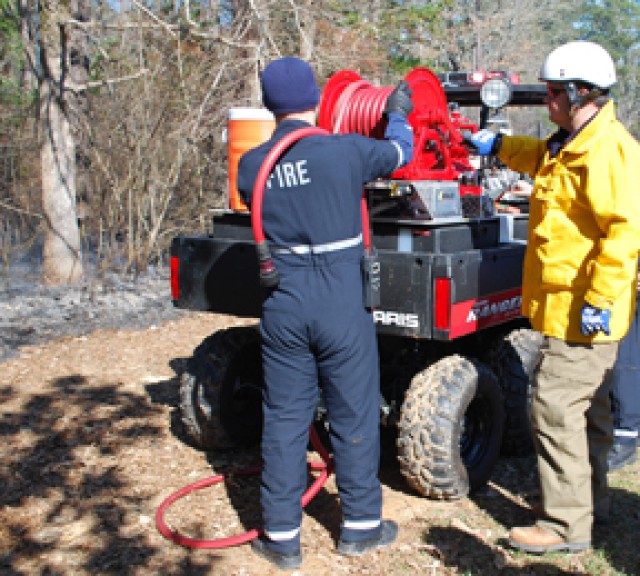FORT POLK, La. -- Throughout December and January, Fort Polk's Directorate of Public Works Natural Resources Management Branch, forestry section, has conducted prescribed burns of forested areas on Fort Polk, including several areas adjacent to Family housing. The operation is expected to continue through February. Burning the forested areas within housing areas is necessary to reduce the amount of fuel (leaf litter and pine needles) that has accumulated over time. This minimizes the possibility of a dangerous wildfire. Burning also reduces the amount of underbrush and increases visibility. Better visibility means a safer neighborhood for all residents.
According to Bruce Martin, installation forestry officer, the burns are scheduled for the winter months because there is minimal green undergrowth, which produces more smoke than dry debris. 2003 was the last time the forestry team burned near the housing areas. "It's not like burning out in the range areas," Martin said. "We spend more time patrolling. Our level of patrolling is intense. It's a no-fail game for us." The Directorate of Emergency Services firefighters and the Fort Polk Safety Office are also on hand at the burn sites to ensure a safe operation. "The firefighters' presence helps the residents feel more secure because they are familiar," Martin said. "They can call the right equipment in to respond if there is a structure fire."
"We have shared responsibility for this operation," agreed Chief Michael Kuk, Fort Polk Fire Department. The agencies' precautions have paid off, as there have not been any structure fires during prescribed burns in recent memory.
The risk resulting from infrequent controlled burns is high. "Louisiana has everything Southern California has in terms of potential for severe wildfires," said Kuk. "Because a lot of the housing on post adjoins wooded areas, they are under a threat from wild fires because pine is a volatile fuel when it is dry. It burns easily and very hot."
Kuk said the weather has been ideal for the prescribed burns this year. "The fire did not pose any threats and it burned all the debris in the intended area," he said. The agencies have completed 9,000 acres of prescribed burning, and hope to cover 21,000 more this year.


Social Sharing